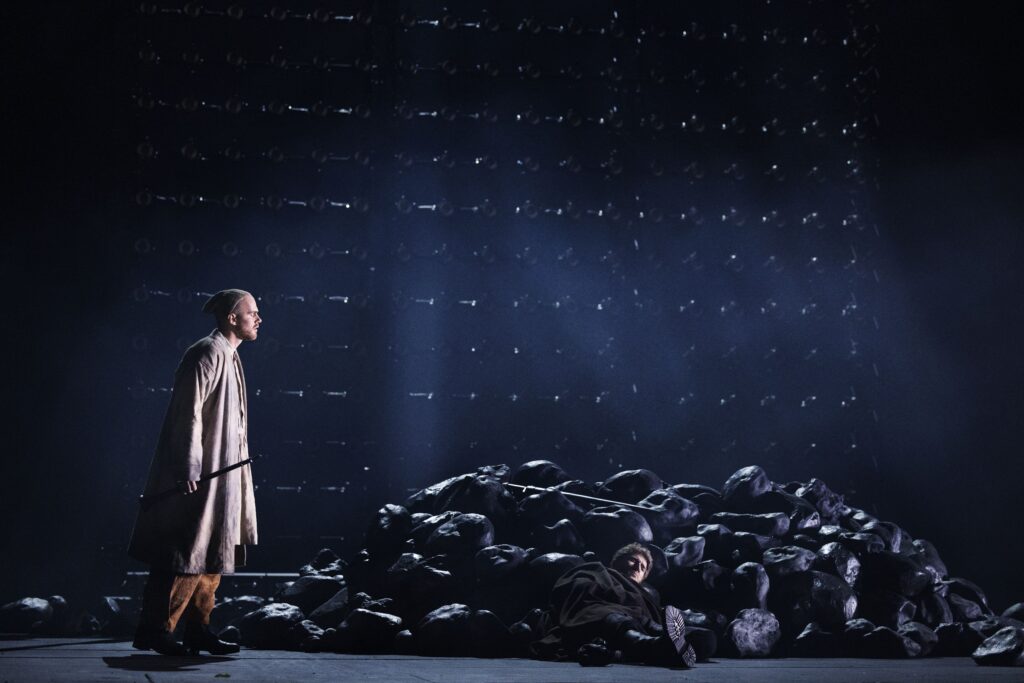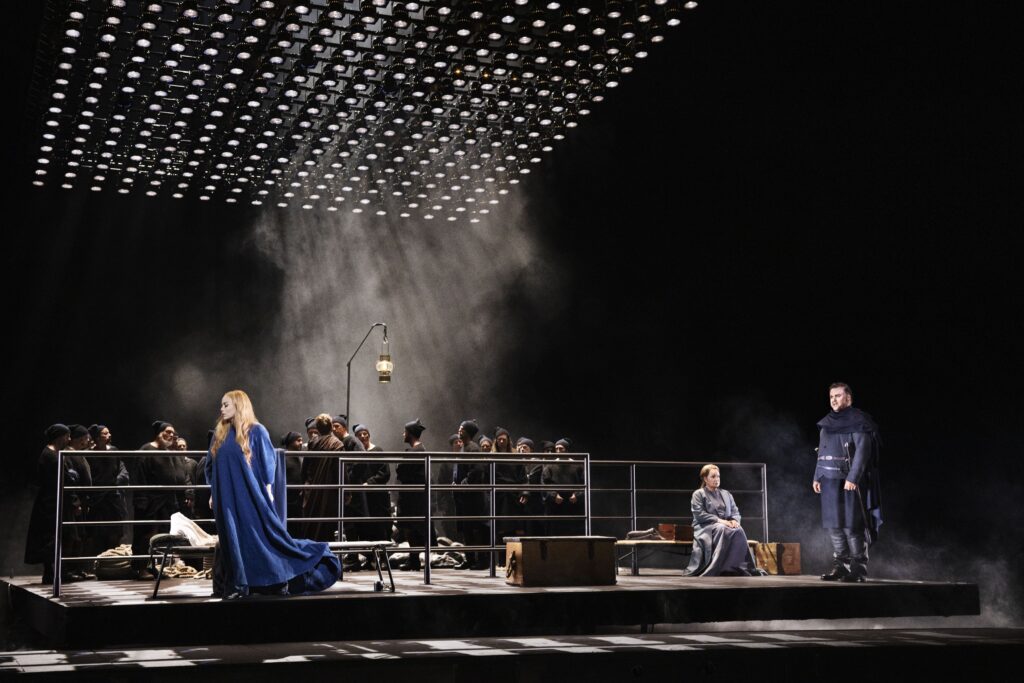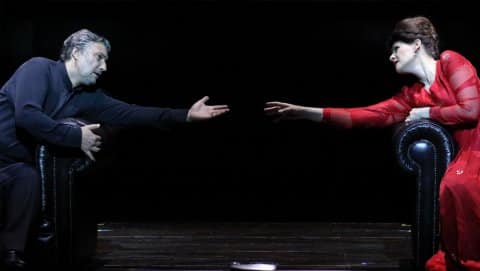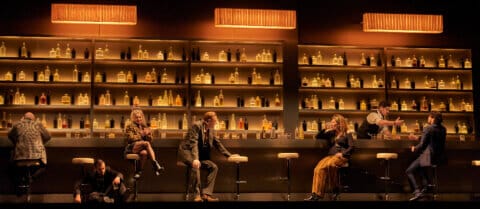TRISTAN AND ISOLDE • OPERA
★★★★★☆

Foto: Miklos Szabo
REVIEW TRISTAN AND ISOLDE: GREAT ART IN SLOWMOTION
Tristan and Isolde is an instrumentalization of cultural education. Experiencing Wagner’s monumental work at the Royal Danish Opera is a kind of seal of approval of ballast within the arts. Wagner’s composition is mind-blowing music, and Swedish stage director Sofia Jupiter has created a successful staging with simple, effective images that leave room for the big emotions. Understand that it takes as long as it takes…
In terms of stage drama, Tristan and Isolde is certainly not a page-turner, if you can use that parallel.
I think we have to be honest and address the fact that in its execution of the rather simple plot, the show lacks theatrical momentum in several stretches throughout the total running time of over five hours including two intermissions.
But the music!
T&S is a highly significant, music-historical work at the pinnacle of full orchestration in a tonal language and musical structure that blew away its contemporaries (1865).
A musical tour de force in the realm of emotions, in which even connoisseurs never really settle down, as new layers and meanings are revealed every time you listen a little closer.
The title roles are satisfactorily fulfilled by Bryan Register and Elisabeth Strid, strongly flanked by Kyoungil Ko as King Marke and Hanne Fischer as Brangäne.

Photo: Miklos Szabo
Three beautiful stage pictures by Erlend Birkeland frame the three acts of the story. A boat deck on a large, tilting console, a hyper-poetic flower garden and a deliciously gloomy quarry in front of Tristan’s castle, where the finale takes place in an incredibly beautiful lighting design.
Throughout the ending, the Mild und Leise motif runs through the inevitable murders and the fulfilment of the Liebestod it’s all about. It is great art, and you can be sure that Wagner doesn’t give a damn if you find the execution tedious.
Wagner was a musical revolutionary who wanted to revolutionize the traditional opera form.

Photo: Miklos Szabo
Instead of the usual ‘number operas’ with single-hit arias and disruptive applause between the ear-hangers, Wagner created a constantly fluctuating tonal flow of transitions in T&S, a kind of yearning language of restless music without ‘proper’ closing cadences.
Wagner was strongly inspired by the philosopher Schopenhauer, who insisted on music’s superior ability to convey emotion and express the unspeakable. A viewpoint Wagner bought into energetically and which characterizes T&S from start to finish.
Sit back and enjoy long, uninterrupted tone sequences with series of chromatic rises – build-ups to release – so you can’t help but realize it’s all about sex.

Photo: Miklos Szabo
With climaxes that either culminate in a powerful crescendo – or bend down into a meaningful diminuendo. The score is a treat for music theoretical and compositional close studies.
Five stars from GOT TO SEE THIS for a rich, artistic experience in the company of a brilliantly playing Kgl. Kapel under the confident direction of Paolo Carignani.
Read more about the plot and check out additional background material in my review of Tristan and Isolde from Bayerischer Staatsoper in Munich in a star cast with Jonas Kaufmann and Anja Harteros here.
You can also look forward to reading when I write home from this year’s Wagner Festspiele in Bayreuth in August, where I review both The Flying Dutchman staged by Dmitri Tcherniakov with Michael Volle as the Dutchman and Tristan and Isolde with Camilla Nylund and others. It’s going to be great.




